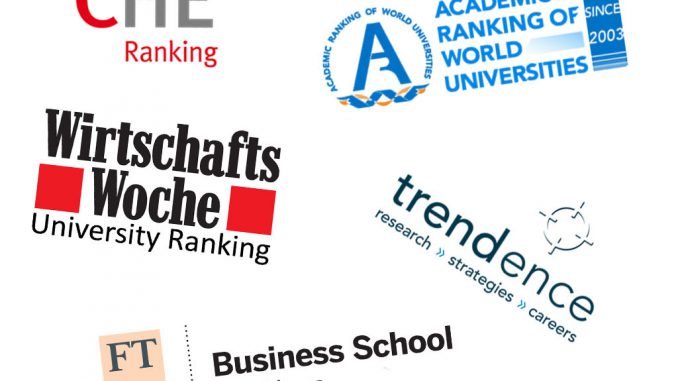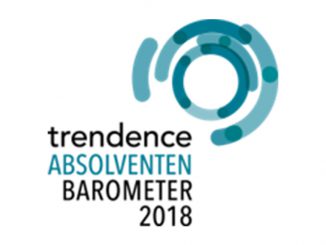
University rankings appear in the news quite frequently – and play a major role for business schools. Usually, some see themselves confirmed by the results while others are wondering. Those on top no less than those with improved results habitually turn on the PR machine. Those who have been relegated or have failed will ignore results or expresses doubts of methods. In some cases, the publication of ranking results is followed by heated discussions on internet platforms that are not always based on facts and expertise.
Fact is: There are different motifs for publishing university rankings. For some media (e.g. Financial Times, WirtschaftsWoche), rankings are an integral part of their annual editorial schedule, meant to attract buyers and advertisers. Other ranking editors prioritize the interests of future students when selecting their subject and location of choice (e.g. CHE Ranking) or they try to make research achievements internationally comparable (e.g. Shanghai Ranking).
Future students who want to use rankings for their personal evaluation or decision-making could benefit from considering the following recommendations:
Tip No. 1: Get an overview of the institution(s) that publish the ranking and its goals
The data basis for the ranking is a significant aspect. Has the ranking been merely compiled on the basis of a survey or are the results based on objective data? If the ranking is based on a survey: Exactly what clientele was interviewed? If results are data-based: Who supplied the data? Are the analyzed facts reliable and publicly accessible; or have they been provided by the university/ academic institution itself? The ranking of WirtschaftsWoche, for example, annually interviews HR managers from corporate practice, whereas the CHE ranking integrates results from student surveys with objective data and facts (publicly accessible data, mixed with university data).
Tip No. 2: Do not only look at the positions within the ranking but also consider methods and small print
If a ranking does not list an academic institution among the top universities, this could of course be owed to the fact that the institution has indeed achieved bad results; the reason, however, could also be that the editor of the ranking did not even include the institution in the evaluation. In some cases, certain accreditations are a basic requirement for inclusion into the ranking (e.g. Financial Times). In other cases, specific universities intentionally decline participation in such rankings. Consequentially, a university that is not listed is not necessarily worse than the ranked institutions.
Also important for the interpretation of a ranking is the organizational unit that was examined: Is it the university as a whole (e.g. Shanghai ranking), a specific faculty (e.g. CHE ranking) or even merely one specific study program (e.g. Financial Times)?
Tip No. 3: If “your” university is not ranked among the top universities, try to find out if it has been included at all
Often, rankings are based on a number of different criteria assigned with specific weighting in relation to others, which are then, however, published in a single consolidated table. In such cases, it is important to look into the underlying criteria and their interrelated weighting. In addition, there are criteria that can be correctly interpreted only in context. Some rankings, for example, use the salary increase of graduates after completion of their studies as basis. It is obvious that, in this case, a European university with a significant share of students from developing countries that find work in Europe after graduation achieves particularly high results. The expected salary increase of a Western European student should be significantly lower.
Caution is also indicated with regard to the criterion of achieved average salaries after graduation: The salaries paid in the various industries differ hugely. A university that releases its graduates into the sector of investment banking will probably attain comparably good results. In this context, another aspect may be of interest: How close to each other are the ranking positions? Is there really a significant difference between position 1 and position 10?
Tip No. 4: Scrutinize the ranking’s criteria and do not fall into the trap of generalizing
Good ranking results are readily celebrated with a press release, and even modest results are often “interpreted” with benevolence. Inevitably, there is almost always a perspective from which one’s own university looks best. There were, for example, press releases that proudly announced the first place in the CHE ranking. Unfortunately, however, the CHE ranking is a multidimensional evaluation and awards only one of altogether three assessments for each dimension. The very thought behind the CHE ranking implies that “the first” does not even exist and that each user can develop his or her individual ranking on the grounds of personal preferences. Another all-time favorite: Specific criteria of a ranking are topicalized, others are completely ignored.
Tip No. 5: Read the original source of the ranking and do not rely on second-hand interpretations.
After all, the most important question is: What does the ranking mean to you? Whoever is looking for a study program that offers optimum preparation for the job market should rather go by the judgment of potential employers (e.g. WirtschaftsWoche). Students aspiring academic careers as international researchers and are looking for suitable Master’s courses can find orientation in research rankings (e.g. Shanghai ranking). Those who are interested in international study programs should focus on the dimension of “internationality” of the ranking criteria (e.g. CHE ranking).
Tip No. 6: Always relate the statements of the ranking to your own preferences
Never decide for a university/ academic institution solely on the grounds of any ranking. However, if you heed these recommendations, rankings can work as valuable guidelines for finding “your” study course.




